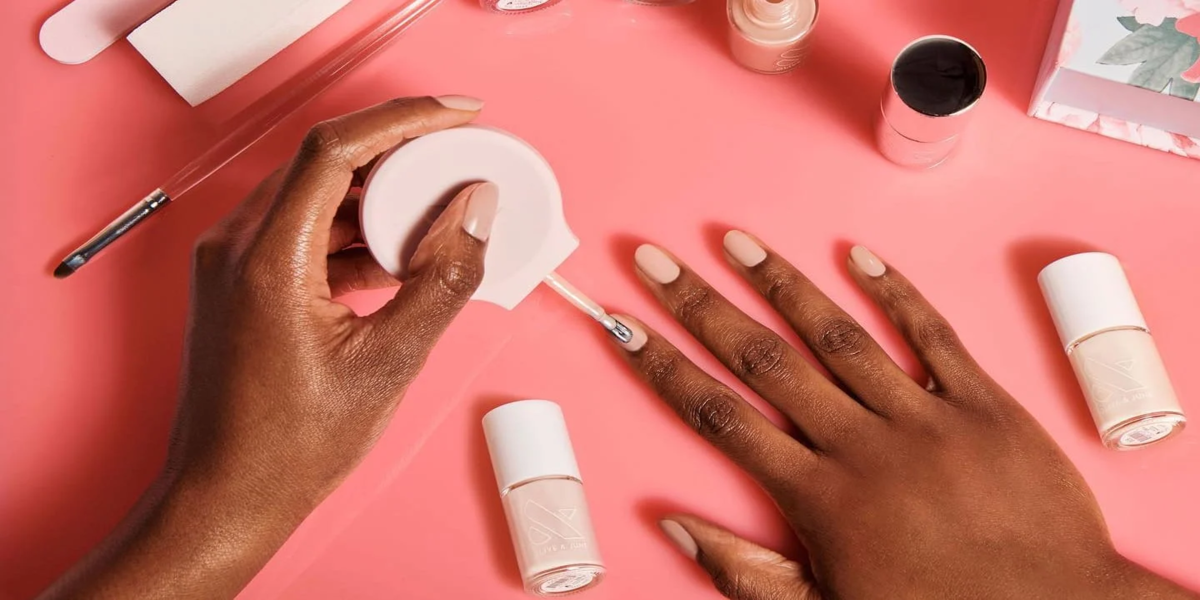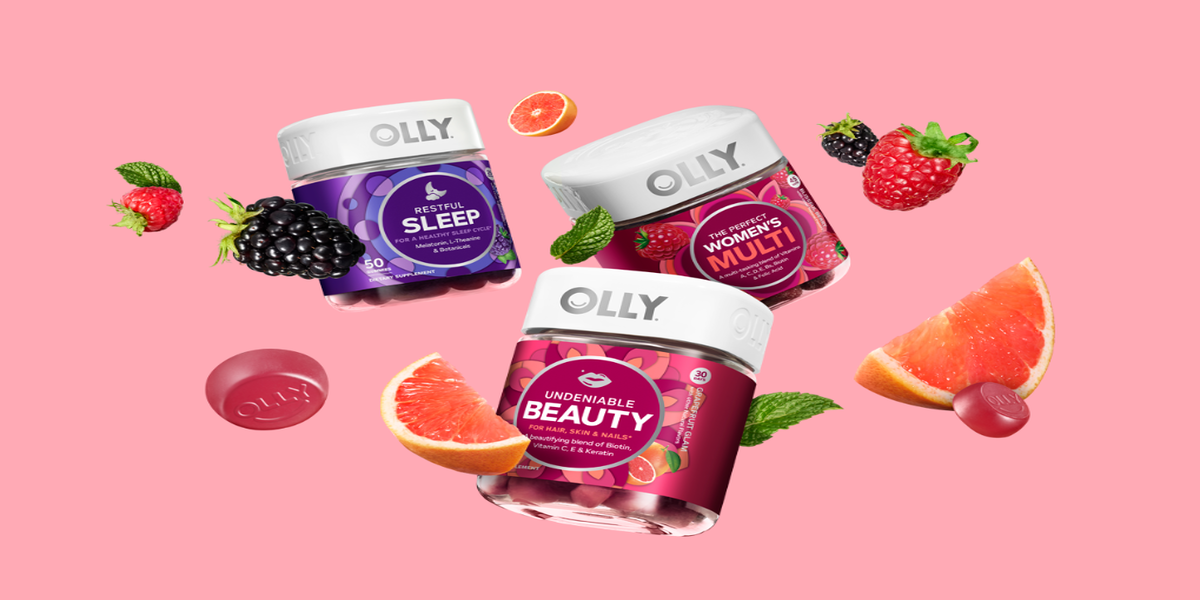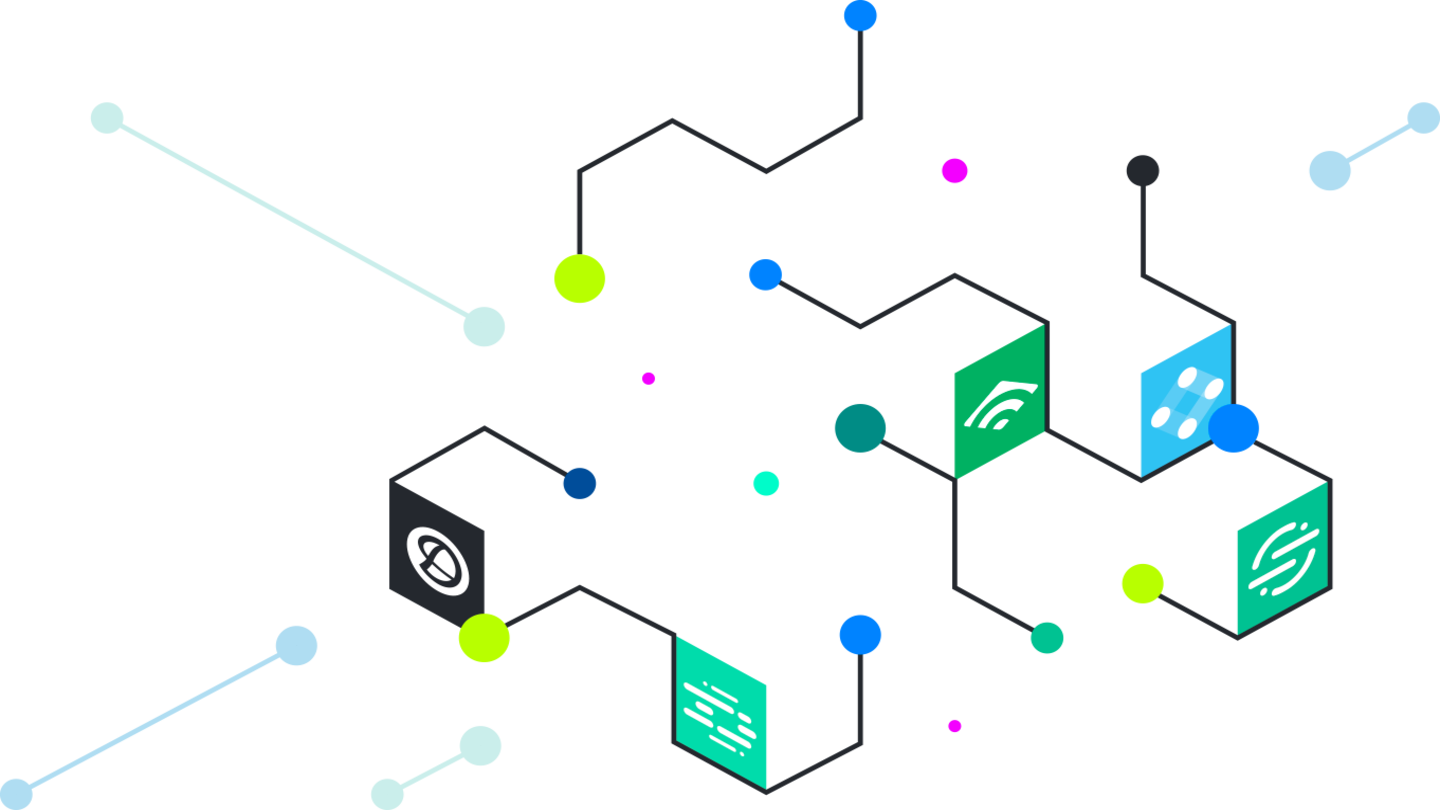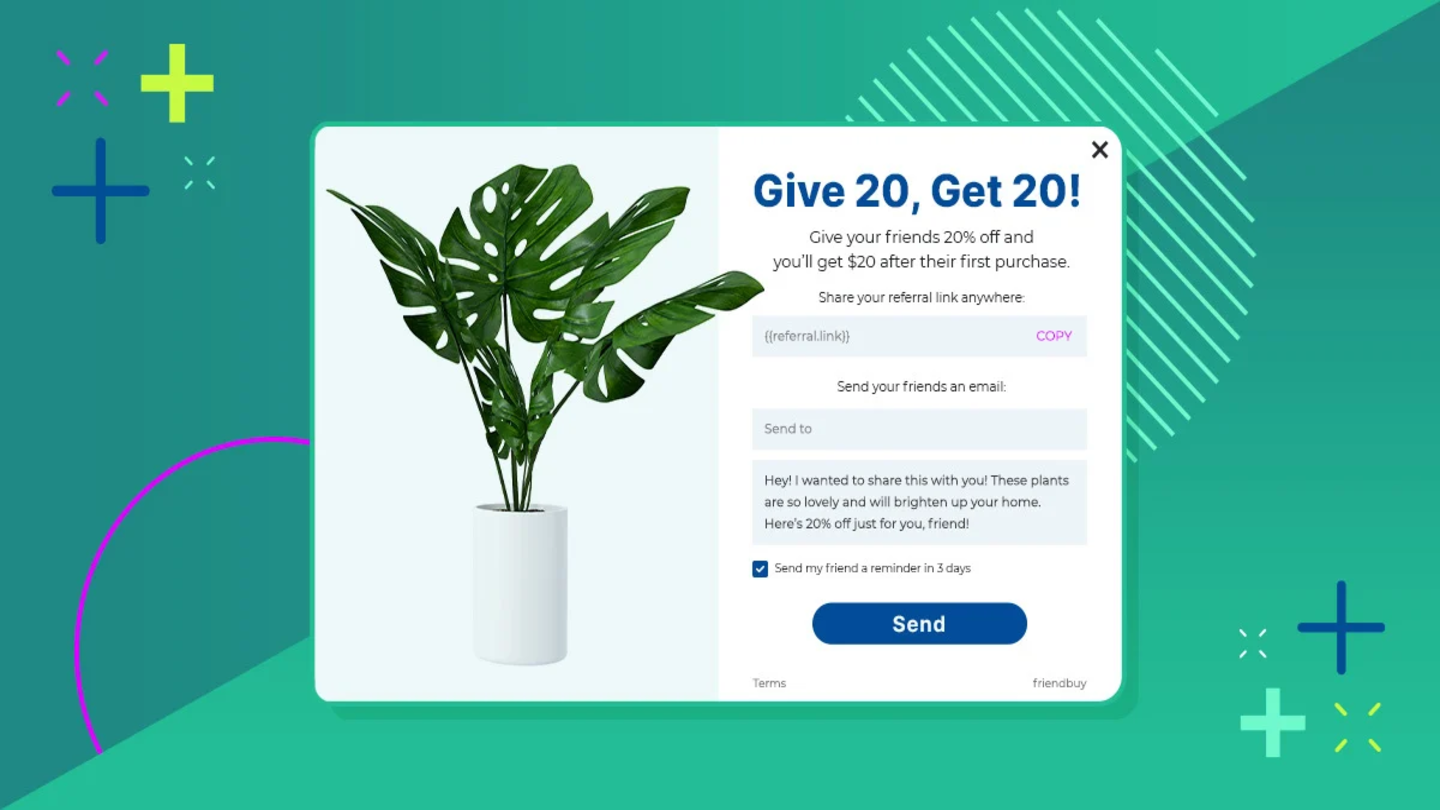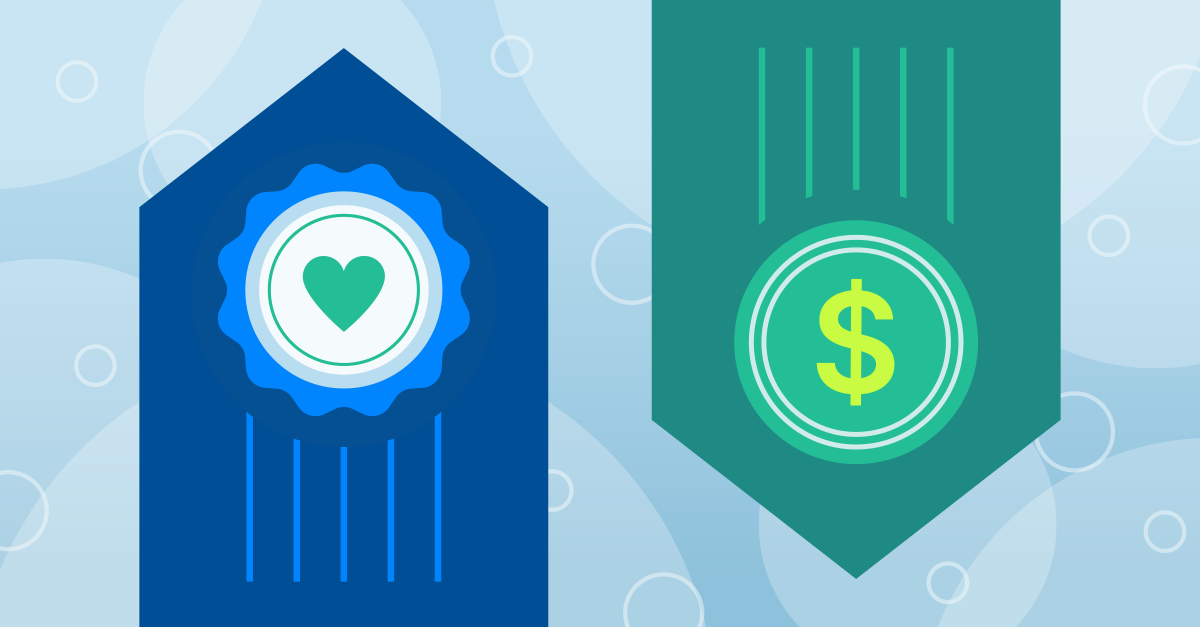Share this article
Table of Contents
Nothing builds a strong business quite like customer loyalty. For starters, building a solid relationship with your brand means customers keep coming back. And statistics suggest 39% of customers prefer to stick with a go-to option when shopping. It’s great when you can find those customers because it means repeat business and a steady stream of income.
The question is: how can you incentivize the rest of your customers to keep coming back, too? Let’s explore the best ways to incentivize customers into becoming repeat buyers, increasing the lifetime value of every new customer you earn.
Why Is Customer Loyalty Important?
Imagine a customer shops with you one time, but they’re so impressed with your business, they decide to become a repeat customer. It might seem like a small decision in that customer’s mind. But for your business, it triggers all sorts of benefits on the bottom line.
According to McKinsey, customer loyalty results in the following:
- 31% of customers are more willing to pay a higher price
- 64% are more likely to purchase more frequently
- 50% are more likely to recommend you to others
This has cascade effects on other areas of your business, including customer satisfaction, churn rate, and word-of-mouth marketing. Additionally, you might build a higher average customer lifetime value (CLV) with every first-time customer who places an order with you.
It’s also cheaper to build customer loyalty. As Manish Goyal said in our video on Leveling Up Your Referral & Loyalty Program, “every customer you acquire through referral is one less you have to acquire through a paid channel. That’s a high-margin conversion.” And statistics bear this out: new customer acquisitions cost 5x what it costs to retain current customers.
Manish Goyal recommends first finding who your best customers are. “It’s usually your best customers who are doing the advocacy,” says Goyal. And these customers usually arrive through word-of-mouth marketing.
The question isn’t whether customer loyalty is a good thing. We’ve established that it is. The question is how you acquire the customers who are more likely to offer you that loyalty.
Learn more: New to Loyalty Marketing? Start Here
How To Measure Customer Loyalty
The first step? That old business adage: what gets measured, gets managed. You can’t improve customer loyalty until you know the specific variables to watch.
It might not sound important now, but if you don’t know your numbers, then it becomes harder to set clear, definable goals. And without those goals, you might not know what your customer loyalty program should look like in the first place.
The challenge is an abstract idea (loyalty) and turning it into something more tactile that shows up in your analytics. That's where the right loyalty program software comes in, which can track these metrics seamlessly. Below, we’ll tackle some of the most important metrics to consider when measuring customer loyalty.
Customer satisfaction levels
When was the last time you offered your loyalty to a brand that disappointed you? Exactly. Customer satisfaction is the bedrock principle when building customer loyalty. Without it, none of the other principles make much sense. You either please customers, or you don’t. You either earn their loyalty, or you’re just another interaction for them. When building customer loyalty, there isn’t much of a middle ground.
For example, a loyalty program that offers point rewards for a single interaction can improve the satisfaction of that engagement. A customer sees they didn’t just buy something from you. Maybe they also get an email that informs them they have five points to use towards future purchases. They feel a little better for having bought from you.
What are some other ways of tracking and improving customer satisfaction levels? Let’s look at some of the key metrics to consider:
Churn rate
Churn rate is your percentage of customers who drop off, typically by ending their subscription to a service you provide. For example, if you have 1,000 customers and 200 drop off within your year, that year’s churn rate was 20%. The lower your churn rate is, the less you have to spend on new customers. And if new customers cost 5x what your current customers cost, that’s a problematic recipe.
Don’t expect your churn rate ever to be 0%. This is almost like expecting a salesperson at your company to have a sales rate of 100%. There are simply too many realities you’re up against. But you can minimize churn rate with some key tactics.
- Reward loyal customers. Occasionally send loyal customers prizes, gifts, and incentives. Or give them first-dibs access to new product launches. In short, remind them why it’s a good idea to stay subscribed.
- Keep friction low. Imagine if a customer had to get their credit card out every month. It would add to friction and force them to make a new decision every month. To keep customers around, make sure it’s easier for them to stay than it is to unsubscribe (within reason).
- Give them loyalty points. If a customer earns loyalty points for every month their subscription goes through, they feel like they’re building up to something. Why opt out if they’re not too far from a new bonus?
Customer lifetime value
Your customer lifetime value, or CLV, is what they ultimately buy from you over their entire history as a customer. This means it doesn’t matter as much what the customer is initially buying from you as long as the CLV is high.
Take Starbucks as an example. A cup of coffee might cost a few dollars. But if Starbucks keeps your loyalty, the lifetime value of that single, ice-breaking transaction can end up being thousands, if not tens of thousands, of dollars.
Improving customer lifetime value is often about two factors: the size of the average purchase they make, and how many times that customer returns. For Starbucks, a small profit margin on lots of interactions creates a tremendous CLV.
But there’s a third element to consider. Your CLV goes up if more of those customers share their experience with friends and family, potentially sending you a customer referral. To ensure they do, make sure you ask for referrals at high points in the customer journey, like after they leave a positive customer review or decide to re-up a subscription order.
Repeat purchase rate
Think of this as the positive opposite of churn. How often do customers feel compelled to purchase a second time? Instead of reducing friction to improve this rate, you might think about incentives that keep customers returning for more.
For example, a scrubs brand named FIGS will send customer lifecycle emails to their new customers after the first purchase. These emails introduce the customer loyalty program. By explaining the benefits and points that build up the more the customer stays around, they’re pointing out why it’s better to make more purchases with the FIGS brand in the future.
24 Ways to Build & Maintain Customer Loyalty
Building customer loyalty isn’t just about adding incentives and removing disincentives. Both are important, of course. But you’ll need to take a strategic approach for both if you want to maximize long-term customer loyalty.
Here are some of our favorite tips for creating a loyalty program that keeps customers feeling good about your brand and the purchases they make.
Want more examples? See these loyalty program emails.
Offer brand-authentic rewards
If you look at the tips above, it may sound like bribery. “If you want customers to stay loyal, just reward them!” And yes, direct incentives like this will work. But if you want to take customer loyalty to another level, make the rewards fit your brand. More importantly, the rewards should fit what your audience wants out of that brand.
Build a loyalty program that fits what your customers already like to do. Do you have an offering that works well on a mobile app? You can customize how many loyalty points customers receive when they download it. Do you sell trendy items like seasonal fashion? Encouraging them to shop your new collection with points earned on every dollar spent will fit the bill.
And don’t forget what your brand does in the first place. People who like a beauty brand are going to appreciate beauty samples. People who follow an environmentally-friendly “green” brand might place other benefits ahead of discounts. But speaking of discounts…
Offer discounts
Sometimes, discounts can be perfectly on-brand. Take the example from On Running above. This was a limited-time holiday promotion: refer a friend or family member and earn 30% off. And if referrals used that same voucher 10 times, the referrer would earn another prize: a Merino Beanie.
Again we see a fit between brand and customer discounts. Even the beanie fits runners well. After all, runners need beanies, especially during the winter season as this promotion ran.
Discounts work because they’re incentivizing, yes. But they’re also automatically on-brand. Someone with an account with your shop already wants the kinds of products you sell. That’s why they’re there. A discount keeps them around, thinking of ways to save money on their next purchase.
Reward customers
What’s more incentivizing than a straightforward reward? That was a rhetorical question. Truth is, it’s hard to come up with a clever customer rewards program that will be more effective than Casper’s. Casper offered a $200 Amazon.com gift card (above the usual $75) to promote referrals during a specific season.
If that wasn’t enough, Casper threw 10% off on mattress orders on top of that. Why so much? Asking customers to make direct referrals helps inspire word-of-mouth advertising. Word-of-mouth, in turn, is one of the most potent ways to cause someone else to make a purchase. In fact, 54% of purchase decisions come from these direct referrals.
In this case, Casper isn’t just offering a prize for customer loyalty. They’re looking for customers to take action on their enthusiasm for the brand. And they’re willing to offer steep discounts with the knowledge that word-of-mouth marketing is the most potent way to look for other customers’ loyalty as well.
Encourage referrals
The example above highlights the value of a referral. If 54% of purchasing decisions come from a referral, completely spontaneous or not, it’s a powerful tool for finding new customers.
Friendbuy's loyalty program software allows brands to select "Refer A Friend" as an earning event in their loyalty program.
.jpg?width=1000&height=470&name=refer%20a%20friend%20earning%20event%20in%20loyalty%20program%20(1).jpg)
We helped Saalt create a points-based rewards program that prioritized the actions most valuable to the business, including the Refer A Friend option.
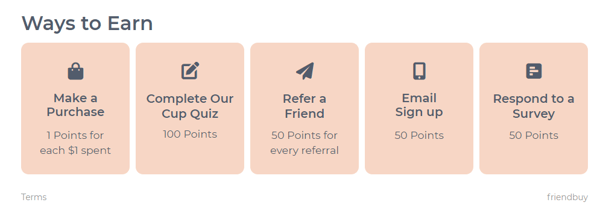
You can encourage referrals through your loyalty program. Referral programs are great for getting customers coming inbound to your business. Loyalty programs are how you make them stay. Use them together, and you have a recipe for long-term success.
Create a points-based reward system
Ever play a video game into the late hours because of the appeal of beating “one…more…level”? Then you know how strong the pull of a good point system can be. Offering customer incentives is the first level of building a powerful loyalty program, true.
But can you get customers thinking about “leveling up” to their next reward because of how many points they saved? That’s loyalty that sticks.
We helped Olive & June create a points-based rewards program that rewarded a lot of different actions.
.jpg?width=1000&height=565&name=oliveandjune%20earn%20loyalty%20points%20(1).jpg)
The brand made sure to translate those points into product for loyalty members to dangle the proverbial carrot leading to their loyalty rewards program.
.jpg?width=1000&height=464&name=oliveandjune%20redeem%20rewards%20(1).jpg)
Partner with another company
When offering incentives for customer loyalty, you have one limitation: you’re you. There’s only so much you can offer the customer that comes from you.
But partnering with another company introduces a completely new element into your customer loyalty program. Whether you do it indirectly (offering Amazon gift cards, for example, as loyalty incentives) or directly working with another company to offer loyalty incentives, make sure these tie into your brand’s messaging. Rewards are great, but they’re more likely to be effective if they still fit with the kinds of rewards your audience would enjoy.
Set up a subscription service
Build loyalty into the product itself. Rather than boosting CLV by hoping your customers love your product enough to keep buying it, a subscription-based model (like Dollar Shave Club’s) means every referral starts the customer lifecycle as a subscriber. All you have to do after that? Make the same commitments to quality and customer experience you always make.
Ask for feedback
Speaking of customer experience: you’ll never know what it looks like until you start asking more customers about it. Some brands, like Naturebox, even incorporate a post-survey referral widget. This helps capture customers when they may be most enthusiastic about your brand. Hopefully, that comes right after a stellar review. But even if it doesn’t, asking for feedback helps you build an experience for improved CLV.
Ask for reviews
About 95% of customers will read online reviews before purchasing. These reviews boost trust, especially for first-time buyers without direct experience engaging your brand.
Friendbuy makes that easy with its integrations, allowing you to collect hundreds and even thousands of reviews eventually. But you may need to get the ball rolling. Use post-purchase follow-up emails as opportunities to ask people for reviews. Incentivize those reviews with loyalty program points in the beginning. Over time, those reviews add up, increasing the trust you’ll receive from first-time customers.
Respond to feedback and reviews
You can’t control what the reviews say. You can’t control what the feedback says, at least not in the moment. But you can control your response to each. If you want to inspire loyalty, use your responses to reinforce that the customers’ relationship with your brand is a dialogue, not a monologue.
Even if they had a bad experience, they may find your response was so professional and helpful that you’re worth rewarding with long-term loyalty.
Pay attention to social sentiment
Social sentiment refers to the predominant feeling people share about your brand on social media. You can buy some of this via influencer marketing. But little touches, like responding to customer feedback in a way that doesn’t come across as robotic, may help just as much.
Take the example of Glossier, which maintains a positive tone with its customers. They also vary their feedback responses so it doesn’t sound like a bot is doing all of the customer interactions online.
Show gratitude
Gratitude has a way of bringing people together. It’s no different for customers and brands. Position the occasional reward as gratitude, such as a reward for a customer who’s stayed subscribed to your product/service for 12 months. Chances are, the customer isn’t registering those months as closely as you are.
This makes your random reward feel much more like a spontaneous prize, only reinforcing how much attention you’re paying to their value as a customer.
Use a CRM for loyalty management
Customer relationship management software helps you track your interactions with each customer. This gives your team actionable insights and data they can bring to any interaction. After all, a customer isn’t going to feel loyal to a brand that doesn’t seem to know them. But if your next interaction remembers a touchpoint like a previous purchase or referral, they’ll know they’re more than just a number to you. They’re a relationship.
Personalize sales and marketing
“Hi!” might be a friendly way to start a conversation. But “Hi, Dale!” or “Hi, Liz!” has a different ring to it. And 36% of shoppers believe retailers need to offer more personalized services. Human beings are social creatures, after all. We’re far more likely to offer our enduring loyalty when we know a brand at least knows us by name.
Create loyalty tiers
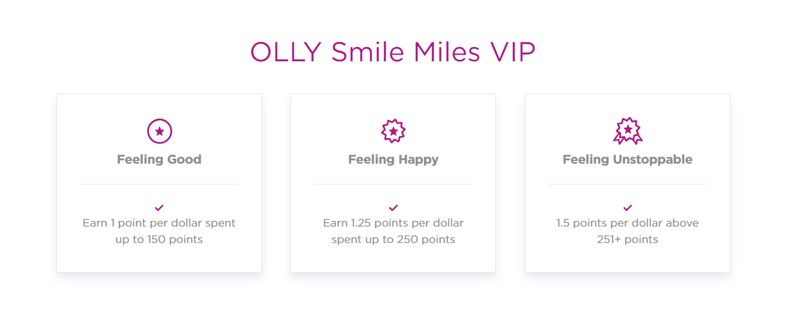
Customer loyalty is often a matter of investment. How much time or energy do they invest in you? Tiered rewards, or rewards that accelerate the more your customers engage in it, give them a feeling of exclusivity. If they can unlock $25 per referral rather than $5 per referral, as they could for OLLY (above), they’re more likely to become a staunch advocate for your products.
Engage your customers
It’s hard to inspire customer loyalty if you can’t inspire any engagement at all. That’s why Spartan uses a model of engagement that challenges its customers with weekly contests, giving out prizes for the three customers who referred the most emails. This is a great method if you have plenty of customers and great rewards, but aren’t sure why you haven’t been able to stir any excitement in your loyalty program quite yet.
Maintain a human connection
Most loyalty programs focus on the brand and customer relationship. But brands like Metromile sometimes generate engagement by showing a more human side to their brand. The human connection goes above and beyond simple personalization. Try to find ways to remind your customers that you care not only about their loyalty, but about creating a better world.
This is especially relevant with Gen Z consumers, 71% of whom reported enjoying when a brand included a secondary message like mental health with its campaigns.
Make yourself available
When customers have a post-purchase question, is your brand responsive? When they reach out with a shipping question, is there someone to help? If they talk about you on social media, does it get any notice from your company? If 90% of success in life is showing up, consider your brand’s availability to be “showing up.” Make an effort to be responsive and communicative through multiple channels.
Prioritize emotional relationships
People tend to offer loyalty to relationships that engage them emotionally. The customer who knows all about a cashier’s personal life is probably going to pick that gas station over the next, even if the prices are a few cents less down the road. Tell the story of the people who work at your brand to build a deeper emotional connection with customers. Let them know who they’re buying from.
Speak your customer’s language
Invest in customer feedback and surveys, because customers won’t just tell you what you need to fix. They’ll also teach you their language. Notice the words that keep popping up. Incorporate those priorities into your brand’s voice. And don’t be afraid to keep it casual! Outdoor Voices’ use of “oops” is just one word, but it’s a subtle reminder that the brand remembers it’s speaking to humans and not numbers on a screen.
Be honest
A lawsuit against Taco Bell over the quality of its meat might have sounded like a PR disaster waiting to happen. And it could have been. But rather than getting overly defensive, the company told an honest story about what really is in their meat. A $3 million “Talk” campaign eventually helped the brand recover in favorability ratings, despite the lawsuit.
You don’t have to launch a national campaign with that kind of honesty to use the same principle. Be upfront about who you are and what you do. You might be surprised at how much customers reward you for it.
Be flexible
If a customer comes to you with a special request, they often know that a brand has internal rules that can’t be bent. But if you bend them because you know that an investment in customer loyalty might be more important than 100% strict adherence to your branding requirements, customers will notice.
Remember their special days
Customer appreciation day, birthdays, anniversaries of their first purchase. Customers don’t always remember some of these special days, which is why a discount email that seems to come out of nowhere is especially rewarding. And if it’s a day the customer will remember, like a birthday, they’re used to getting messages from friends and family. Getting a message from a brand will help solidify the customer-brand relationship on those special occasions.
Offer wish lists
A wish list at your site is a bit like a customer dropping anchor. They may not make the purchase now, but they know what they want. And the next time they visit might be the time they order. You can also use wish lists to update customers about changes in price, which prompt them to purchase.
Inspire Loyalty with a Deliberate Approach
If the list of tips above convinces you of anything, it should be this: loyalty doesn’t just spring up by accident. You inspire loyalty with every interaction optimized, with every email personalized, and every return visit incentivized. Put the tips above into action by systematically integrating a loyalty program for your brand, and you’ll likely see the average lifetime value of your customers go up.

